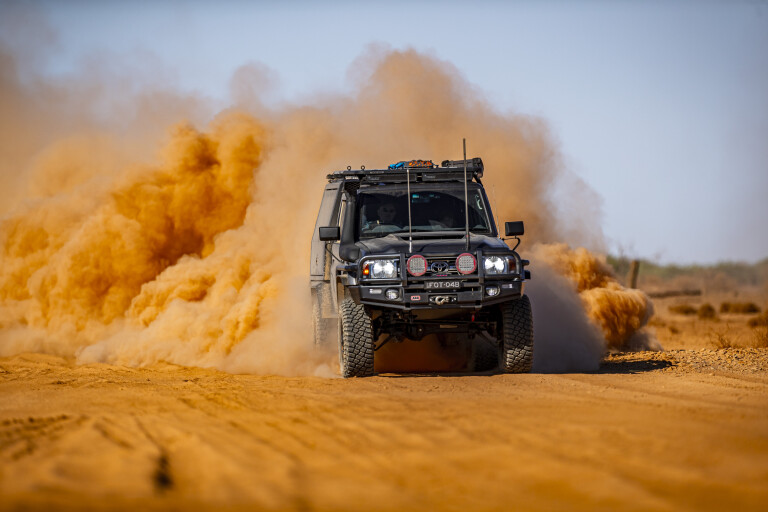
Dirt roads are part and parcel of four-wheel driving. After all, more than 60 per cent of all gazetted roads in Australia are still unsealed. That means there are hundreds of thousands of kilometres of unsealed roads and tracks on which you can drive, ranging from well-formed gravel roads through to rough bush tracks and everything in-between.
Driving on dirt roads is very different to driving on sealed roads and, when doing so, you need to take in to account all sorts of variables including differing levels of grip, obstacles, uneven surfaces, dust and, when it starts to rain, mud.
Not only is it important to adapt your driving style to suit the different conditions you’re likely to encounter when driving on dirt, but also to tailor your vehicle to suit the conditions. Oh, and you’ll also need some special equipment.
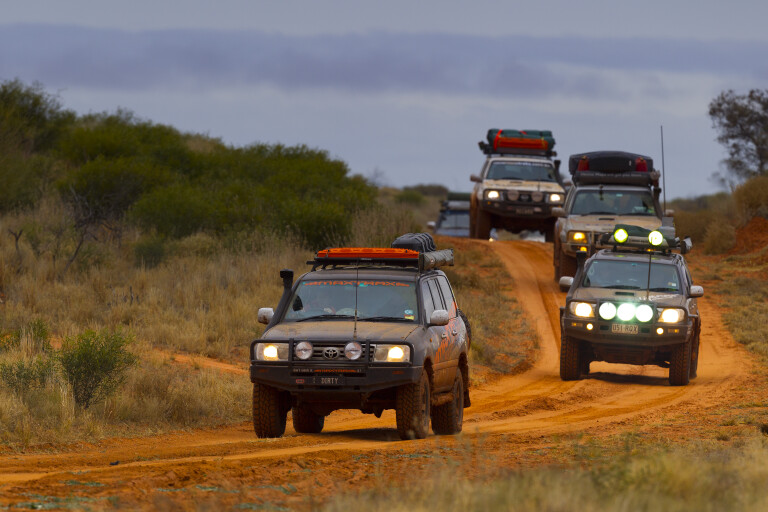
GETTING READY
If you’re going to be regularly driving on dirt or you have a big outback trip planned, you’ll want to flick those standard Passenger (P) construction tyres fitted to your vehicle in favour of some Light Truck (LT) tyres. Dirt roads can be hell on tyres, with sharp stones being flicked up from the front tyres and fired into the tread faces of the rear tyres like a shotgun blast; while surface irregularities such as corrugations, cattle grids and sharp-edged causeways are all potential problems for tyre sidewalls.
The tougher construction of LT tyres means they have more rubber across the tread face and more plies in the sidewalls, so are better able to cope with the harsh conditions presented by dirt-road driving. No matter whether you opt for an all-terrain or a mud-terrain tread pattern, make sure there’s an ‘LT’ marked on your tyres.
Another advantage of LT tyres is that, thanks to their tougher construction, you can reduce air pressures for dirt-road driving more so than with P tyres. More on that later …
The next thing you’ll want to ensure when driving on dirt is that your vehicle’s suspension is in good condition. Sagging springs and worn shock absorbers will not cope with big bumps, potholes and corrugations, and will adversely affect your vehicle’s handling, and therefore your ability to keep it on the straight and narrow when driving on dirt. A well-sorted suspension system with springs that match the load and good quality shock absorbers, will soak up bumps and handle big hits without throwing the vehicle off line – and the bonus is ride quality will be better which in turn minimises driver fatigue.

Dust ingress is another important consideration when driving on dirt. Keeping dust out of a 4x4’s cabin is usually pretty easy; run the air vents on ‘fresh’ when there’s no dust in front of you and flick over to ‘recirculate’ when you spot dust up ahead from preceding or oncoming vehicles. Running on ‘fresh’ will pressurise the cabin and stop dust from being sucked in through vents at the rear of the vehicle, while running on ‘recirculate’ when driving in a dust cloud will minimise dust ingress through the front vents.
For those who drive a ute, keeping the dust out of the tub is a more involved process. Even if you have a hard lid or canopy fitted, dust can still get in through the various holes in the tub and through the gaps around the tailgate. Plugging these holes and fitting a tailgate dust-sealing kit will help, as will fitting a roof vent for those with canopies. A vent will pressurise the canopy to keep dust out.
You also need to keep dust away from your engine’s air intake. Fitting a snorkel can minimise the dust entering the air intake; the theory is that a driver will allow the dust to settle below their line of sight so they can see where they are going, and that a snorkel draws clean air well above this point. Of course, in extremely dusty conditions, air can still be drawn down a snorkel, but the engine will still be breathing cleaner air than if no snorkel is fitted. In extreme conditions, a snorkel sock can be fitted over the snorkel head to further minimise dust ingress.
Don’t be afraid to regularly check the condition of your air filter; a dirty filter will not only reduce engine performance, it will also result in increased fuel consumption, so give it a blast with compressed air to blow some dust out, or replace it with a spare filter if it’s unserviceable.
Finally, make sure your wiper blades are in good nick and your windscreen washer bottle is full; after all, you need to see where you’re going.
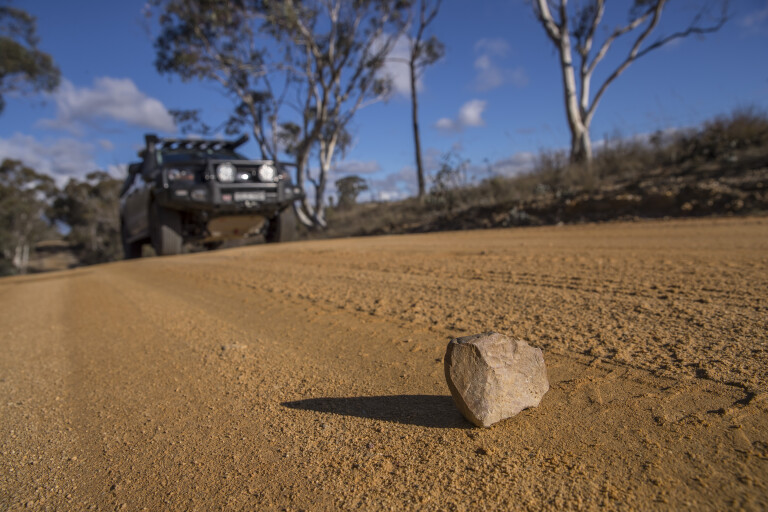
HITTING THE DIRT
One of the first things to do when you hit the dirt is to lower tyre pressures. There is no one-specific dirt-road pressure to suit all vehicles and all roads, but as a general guide, if you normally run 35psi on your moderately loaded 4x4 on sealed roads, for example, you’ll want to drop this down to as low as 26psi or so for dirt-road driving, especially on rough and/or corrugated roads.
Lowering tyre pressures for dirt-road driving offers several benefits. Firstly, it allows the tyres to conform more easily to uneven surfaces, so they are less likely to be damaged (chipping or even puncturing) by protrusions such as sharp-edged rocks. Secondly, it lengthens each tyre’s footprint, which provides more grip when driving on slippery surfaces, resulting in better steering control when cornering and better stability when accelerating and braking. Thirdly, it makes the sidewalls more compliant which improves vehicle ride quality, and this is beneficial to both you and your vehicle.
How do you know what the ‘correct’ tyre pressure is? Trial and error. You’ll be able to feel when you get it right, both through the way the vehicle responds to steering, accelerator and brake inputs, and through overall ride quality.
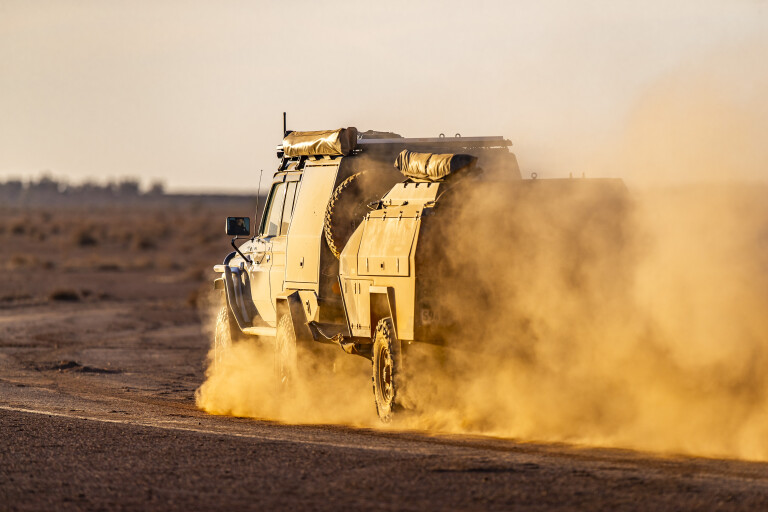
One important thing to bear in mind when driving on lowered tyre pressures is that the tyres will generate more heat, so don’t go belting along at high speeds on low pressures. Also take care when cornering so that you don’t ‘peel’ a tyre off a rim or cause sidewall damage.
The next adjustment to make for dirt-road driving is to your vehicle’s 4x4 system. If you drive a vehicle with a part-time four-wheel drive system (such as employed on many 4x4 utes), engage ‘4H’ (high-range 4x4) when you hit the dirt. This will give you more grip, resulting in more control when accelerating, cornering and even braking. If your vehicle is equipped with a full-time four-wheel drive system, engaging the centre diff lock will also provide the aforementioned benefits through improved grip levels.
Many modern 4x4 wagons (and a few utes) feature driver-selectable modes that tailor the vehicle’s engine, transmission and chassis controls to suit different conditions. If your vehicle is so equipped, for dirt-road driving select the dirt mode, often labelled ‘gravel’. If you’re unsure, have a look in your owner’s manual.
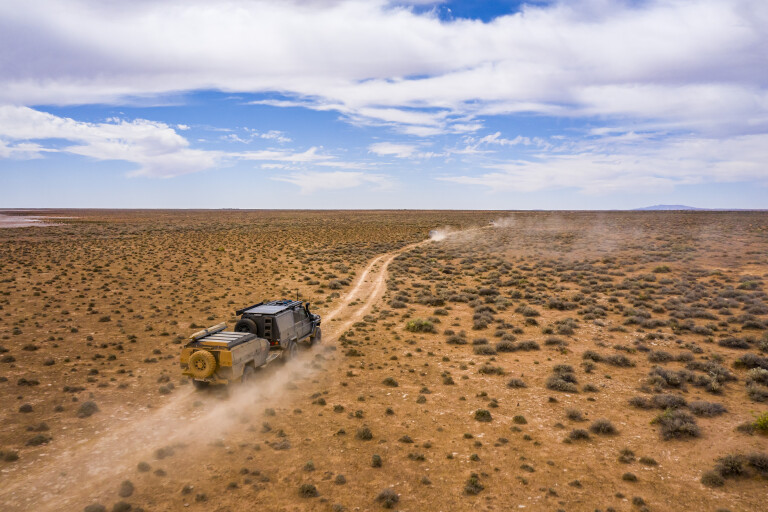
LOOK AND PLAN AHEAD
The key to driving on dirt roads is to look (and plan) well ahead. With reduced grip levels, braking distances will be longer and your vehicle won’t corner as well as it does on sealed roads. Keep an eye out for holes, rocks, washouts, deep wheel tracks, fallen branches and, of course, wildlife. If you see a potential hazard up ahead, adjust your speed accordingly so you’re prepared for it, either by avoiding it altogether or, in the case of unavoidable obstacles, driving over them at a reduced speed so as not to damage your vehicle.
By planning ahead you’ll be able to avoid having to make just-in-the-nick-of-time sudden manoeuvres that can result in a slide … or worse. Many drivers have veered off dirt roads trying to avoid impacts with road-surface irregularities and wildlife.
Gradually decrease vehicle speed when approaching corners rather than stomping on the brake pedal at the last second; the latter of these two approaches can upset vehicle balance when you most need it.
Modern vehicles equipped with electronic stability-control systems are much easier to drive on loose surfaces such as dirt than vehicles with no such systems. Even these have their limitations and, if you exceed them, you could still end up in a ditch if you don’t plan ahead.
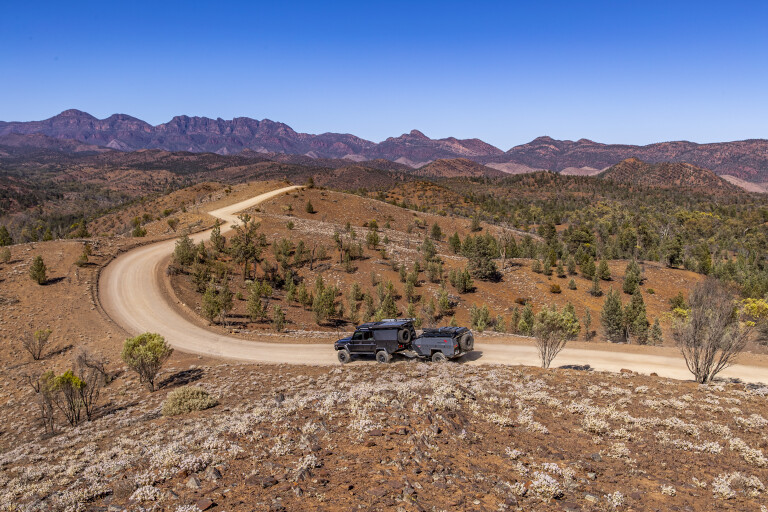
If you’re driving on outback dirt roads, chances are you’ll eventually be confronted with bulldust. Bulldust is essentially made up of dust particles with a consistency akin to talcum powder, and bulldust sections can be long and deep. You can usually spot bulldust sections as you approach them by looking for subtle colour variations in the road surface.
If you can safely avoid bulldust, it’s best to do so, but if not, slow down a bit on approach, keep the vehicle pointing where you want it to go and accelerate out the other side. But don’t fight the steering wheel in the middle of bulldust patches, and try to avoid sudden changes of direction and braking.
Cattle grids and causeways can also catch out unwary drivers; while you may have driven over several relatively smooth examples without problem, the next one could have a harsh edge on it that could damage a tyre or suspension component if you hit it too fast. Always err on the side of caution.

VISIBILITY
One of the biggest problems when driving in dusty conditions is reduced visibility, and this usually occurs when following other vehicles or when passing oncoming vehicles.
If you end up in the dust cloud of a vehicle ahead of you and you're unable to see clearly, your best bet is to slow down enough so that you are back in clear air. If that vehicle is a large truck and it’s not travelling very fast but is generating a lot of dust, perhaps it’d be a good time to pull up for a cuppa rather than trying to blindly navigate through the dust cloud to overtake. If you can’t see where you’re going, you could end up leaving the road or hitting another vehicle.
When you’re confronted with an oncoming vehicle, reduce speed to prepare for limited visibility when driving through that vehicle’s dust cloud. Also try to move as far to the left as is safe to do so, to minimise the risk of windscreen damage to both your vehicle and the oncoming vehicle. In other words, drive courteously … and hopefully that attitude will be exhibited by other drivers to you.
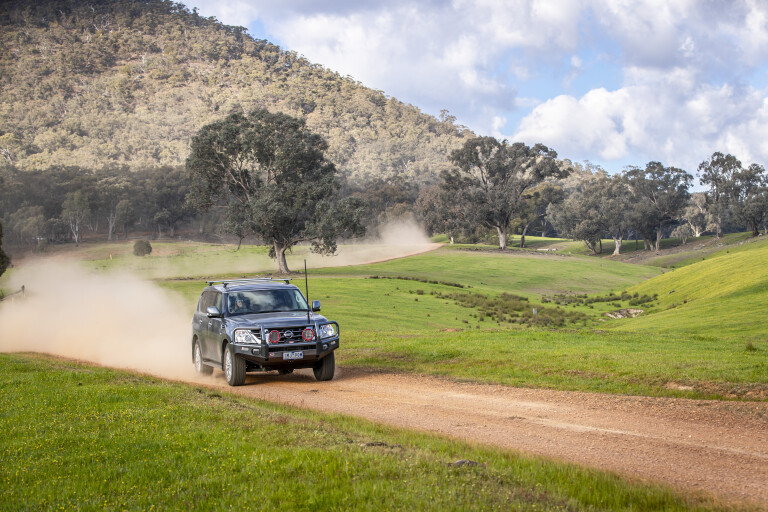
DRIVING ON CORRUGATIONS
Some heavily corrugated dirt roads can be terrible to drive on, but there are ways to minimise the impact of corrugations on you and your vehicle.
First up, finding the right tyre pressures for corrugations is critical. The advantages of lowering pressures (longer tyre footprint for more grip and softer sidewall for more compliance) will make long stretches of corrugated dirt roads much more bearable.
The second major factor in how your 4x4 will behave on corrugations is vehicle speed. Corrugations vary in amplitude and frequency; the amplitude is the height of each corrugation and the frequency is the distance between each corrugation, and ideally you want your vehicle’s suspension to oscillate (move up and down) in tune with the corrugations.
Eh? Put simply, there will be a certain vehicle speed that will be the sweet spot, where your tyres will skip over the top of the corrugations, from one peak to another. This speed might be 80km/h, it might be 90km/h or even 100km/h, and you will know when you’ve hit the sweet spot because you will feel ride quality improve markedly when you get there.
But don’t go too fast in the hunt for the sweet spot, at least not to the point where you might damage your vehicle or lose control …
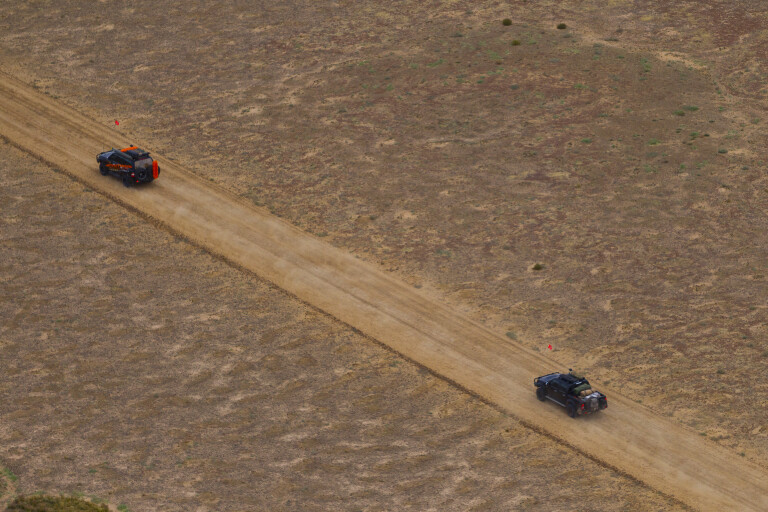
MUD
We talked about mud driving in greater detail in an earlier instalment of ‘4X4 Australia’s How To: Off-Road Driving Series’, but for now we still need to mention the obvious: add water to dirt and it turns in to mud.
When dirt roads are wet, they can become even more slippery than when they are dry, so you will need to adjust your speed to suit the conditions. On outback roads in particular, rain can present some big challenges.
Many outback roads cannot be traversed in wet weather, and if conditions are sketchy you will need to check with local authorities to see if roads are open or closed. If a road is signposted as closed, or you have been informed by authorities that it is closed, you must not attempt to drive on it. Not only could you become hopelessly stuck, but you could also cause damage to said road … and cop a hefty fine in the process.
If you do happen to be driving on an open outback road and it starts to rain, conditions can deteriorate rapidly, with bulldust patches quickly transforming in to vehicle-sucking quagmires.
If you can’t avoid long, sticky stretches of mud, you’ll need to keep your momentum up; don’t drive so fast that you could lose vehicle control, but don’t back off the throttle in boggy mud either.
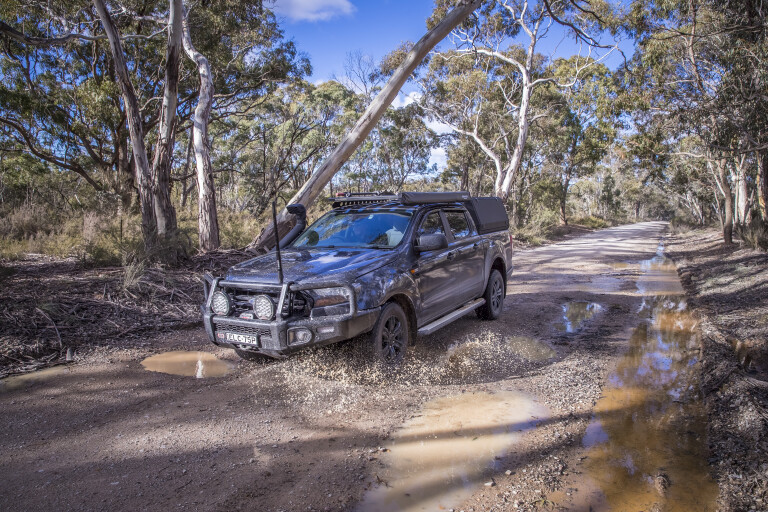
BACK ON THE BLACKTOP
Assuming you have tailored your vehicle to suit dirt-road driving, you’ll need to make a few adjustments once you get back on to sealed roads. Firstly, don’t forget to put part-time 4x4 vehicles back in to two-wheel drive, and disconnect the centre diff lock on full-time 4x4 vehicles. For vehicles with different drive modes, select ‘normal’ or ‘road’ mode.
You’ll also need to reinflate tyres to normal road pressures. If there are only a few kilometres of blacktop before you’ll be back on dirt again, you can leave tyres deflated, but don’t forget to keep your speed in check.
While you’re pulled up and reinflating the tyres, take the time to have a good look over your vehicle. Inspect the tyres for any damage such as nicks or cuts, check the windscreen and lights for chips or cracks, and make sure the licence plates are clean and legible.
DO
1. Adjust tyre pressures to suit dirt roads
2. Select 4X4/lock centre diff
3. Be smooth when cornering, accelerating and braking
4. Look and plan well ahead
5. Slow down for oncoming vehicles
DO NOT
1. Drive too fast for conditions
2. Perform abrupt cornering/braking moves
3. Drive in other’s dust clouds
4. Drive on closed roads
5. Forget to reset/reinflate for sealed roads

COMMENTS